If you’ve cut the cord for your smartphone with a charging pad for the bedside table and one in the car—and, if you’re lucky—wireless CarPlay or Android Auto—you likely get the idea of what a game-changer wireless inductive charging could be for electric cars.
Instead of trying to juggle a toddler or a bag of groceries while you one-arm a clunky cable and charge connector morning and night, it could simply be a matter of parking, getting on with life, and returning to a charged vehicle.
And once you experience it, there’s likely no going back. When was the last time you thought of plugging an ethernet cable—or a phone line—into your laptop?
How does wireless EV charging work?
Wireless charging uses the principle of electromagnetic induction to transmit electrical power through the air as a magnetic field. You might also hear it called inductive charging—or, redundantly, wireless inductive charging.
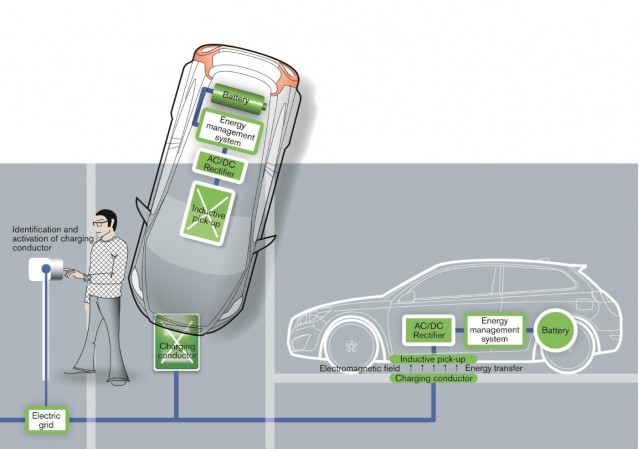
In brief, electricity induces a current on a coil of copper wire, emitted at a certain frequency—one not far from FM radio frequencies, for the most likely applications. That creates an oscillating magnetic field, which is then captured by another copper coil.
With fine-tuning of the signal depending on the spacing, and help from capacitors—and some core-physics ideas like the idea of resonant frequencies—wireless charging can be made practical for EVs without losing too much energy along the way.
Up close
Technically, the system requires two sets of hardware: a transmitter pad for driveway or garage floor that’s connected to a dedicated circuit, just like a wall charger, and a receiver pad to be installed on the bottom of the vehicle.
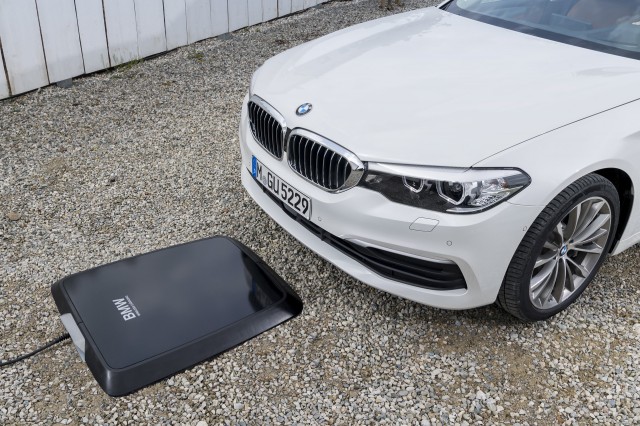
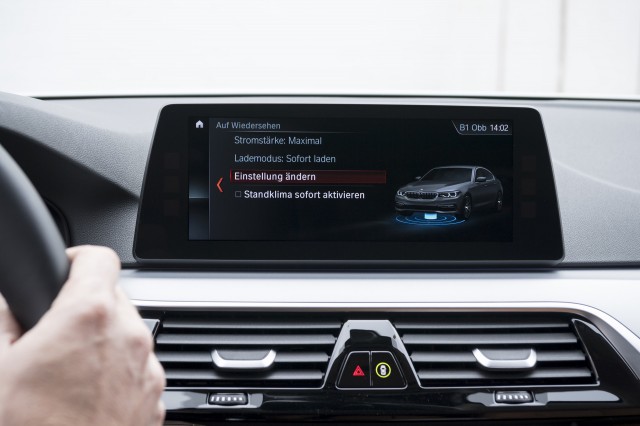
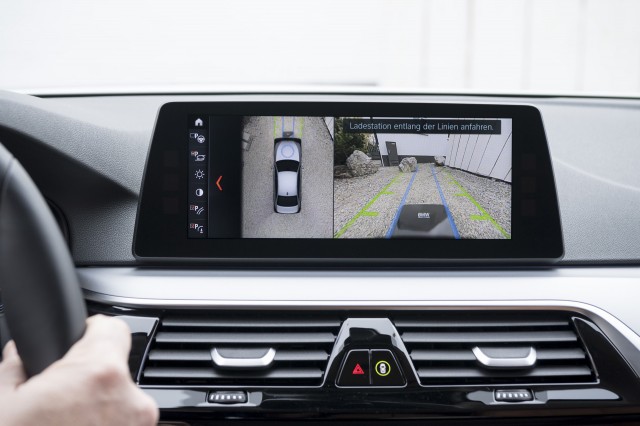
Systems from WiTricity, which has emerged as the technology leader, and others will keep to the J2954 standard that was designed to reliably produce usable wireless charging at a distance of between 10 and 25 cm (3.9 and 9.8 inches), which accommodates the ground clearance of nearly any production vehicle, from sports cars to off-road SUVs. And at 11 kw of power, it’s giving the typical EV back about 35 miles of range per hour parked.
With an alignment method that’s built into the standard, a low-energy beacon signal from the pad helps either display to the driver where the vehicle should be parked, or it automates the whole thing. A wi-fi handshake completes what will essentially be a no-touch version of Plug and Charge—essentially Park and Charge. Voilà.
With roughly 85% of charging done at home, this is designed to be the daily charging method, not special-occasion technology for road trips. “Ultimately the car will feel like they have an infinite-range car,” said WiTricity CEO Alex Gruzen. “They drive it, they park it, they never have to do anything.”
How efficient is wireless car charging?
The efficiency of the Qi wireless charging in your smartphone is as high as 80% at best, but most likely less than 70%, which is why your phone is so warm when you take it off such a charger. That system was designed to be thin and cheap, but with such a higher energy level, a car charging system can’t be wasteful in that way and has been designed specifically around efficiency.

Since some a few automakers last examined the tech for factory installations—like Nissan for the Leaf, more than a decade ago (above), efficiency has improved. Coil to coil, WiTricity’s technology receives 99% of the energy carried over the air gap. Most of the other stages are the same—and there’s no lossy isolation transformer needed, which saves energy. From the circuit box to the vehicle, the efficiency of a wireless system is typically 90% to 92%, right around where most plug-in charging is.
Why is it better?
From a market perspective, wireless charging tech could make EVs much more livable on a day-to-day basis—especially for those who see daily charge cables and connectors as a hassle.
While those cables and connectors need to be replaced every few years, wireless charging hardware doesn’t have those wear points. Snow and ice won’t get in the way either.
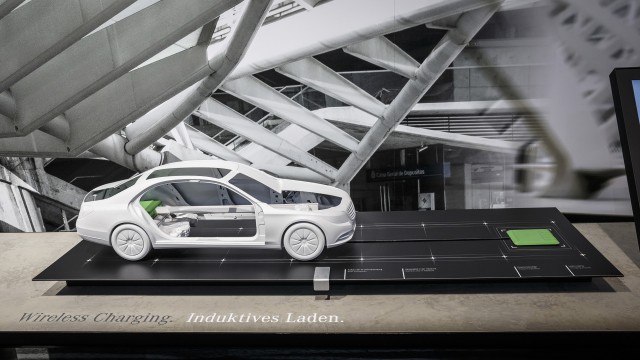
Also, when we get to higher levels of EV adoption, if wireless charging is more frequently used, out of convenience, it will potentially reduce the need for the DC fast-charging that’s more of a burden to the electrical grid.
What are the drawbacks?
Cost is the big one. The option price of wireless charging is likely to be in the thousands. Given the need for two large hardware component sets, it will always cost more than a wall or post charger.
With the charging pad much harder to relocate than a charge connector, the inflexibility of wireless charging might be an issue for some households that are used to changing parking plans by the night.
The interoperability between mixed-and-matched wireless charging components shouldn’t be the issue; that was the whole point of waiting until the industry agreed on a standard, and it’s here.
Which electric vehicles offer wireless charging?
None currently in the U.S., but that’s due to change soon.

Globally, the rollout has started, and it’s all very recent. The Genesis GV60 offers the first factory integration of wireless charging in the world, and it’s included in home-market South Korean versions as part of a pilot program. Hyundai included the technology in the development of its E-GMP platform for dedicated EVs, so expect to see the tech in more models and markets soon.
In China, the tech has been newly adopted in EVs from FAW’s Hongqi brand, as well as IM Motors, a joint-venture of China’s SAIC Motor and the e-commerce giant Alibaba. It’s also in the Alibaba-backed Zhiji L7.
There have been aftermarket wireless-charging solutions for years—most notably, from Plugless Power, which has offered a system for the Tesla Model S. A Tesla Model 3 system from WiTricity is also in the works.

BMW tested wireless charging in the U.S. in its 5-Series plug-in hybrid, but the test wasn’t expanded beyond a small pilot program.
Other labs and startups are currently working on high-power wireless charging, at rates that compare to DC fast-charging, but it might be a decade before that becomes a viable option.
Why hasn’t wireless charging caught on yet?
Simply put, the technology hasn’t yet been ready. But it’s been in the works for a long time.
Wireless charging was originally proposed and demonstrated by Nikola Tesla more than a hundred years ago, but it has been around for decades at an experimental-application stage. A series of advances over the past 15 years have accelerated the progress of the tech to the point where it’s reliable, efficient, and easy to package.
Although Qi wireless charging for smartphones may be the first time this technology became mainstream, it was tested and applied in vehicles first—decades ago. But a series of consolidations in recent years has helped push it from to the point of being more commercially viable. Halo and WiTricity both started by 2010 and took vehicle wireless charging efforts out of university labs and into fledgling companies. Qualcomm bought HaloIPT in 2011, then U.S.-based WiTricity, which had been working on its own slightly different solution, acquired and merged with Qualcomm Halo in 2019.
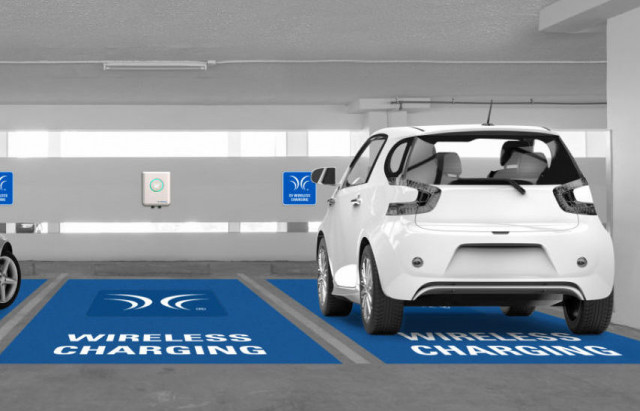
After that, WiTricity “immediately went to work consolidating the architecture…taking the best of both sides, to be able to present to the SAE a common architecture that we thought was the answer,” recalled Gruzen.
That was critical in getting to the SAE J2954 standard ratified in October 2020—essentially a signal that the tech can be brought to market.
The future
The global auto and vehicle supplier Siemens made a $25 million investment in WiTricity in June 2022, and that partnership will result in solutions for the home, parking lot, workplace, or fleet.
Siemens sees the market for wireless charging to reach $2 billion by 2028 in Europe and North America alone.

Although home solutions—and the current SAE standard—go up to 11 kw—we’ll see higher-power versions of this system for fleets. That may largely come from a different set of companies, including HEVO and Momentum Wireless, among others. Separately, there’s another set of companies working on wireless dynamic charging—a relative pipe dream for now that charges vehicles through some of the same principles as the vehicle is driven.
The aftermarket could grow, too. Plugless Power, which has sold aftermarket systems before for the Tesla Model S, Nissan Leaf, and others, is also due to reveal new-generation systems this year at a target price of about $3,500, with a system that will accomplish alignment of the pads via an Apple CarPlay interface.
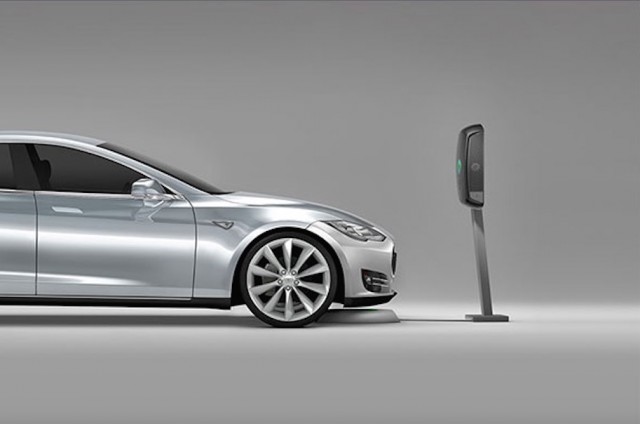
WiTricity points to the company’s own commissioned surveys that show a groundswell of interest in a technology that they’ve likely never encountered in person in cars. It found that based on the concept alone, “EV considerers” who hadn’t yet committed to the idea of buying an electric car increased their purchase intent from 35% to 59% with the availability of wireless charging. A more recent survey for the company found that a lot of non-EV owners want it as an option in a future EV.
“It’s been a conversation with a bunch of engineers in a room for ten years,” said Gruzen. “Now we have a real product in the market.”
And as the price comes down and all the early adopters have bought EVs, it could become what helps sell many more Americans on EV ownership.
READ MORE: 10 Hidden Costs of Owning an Electric Vehicle




